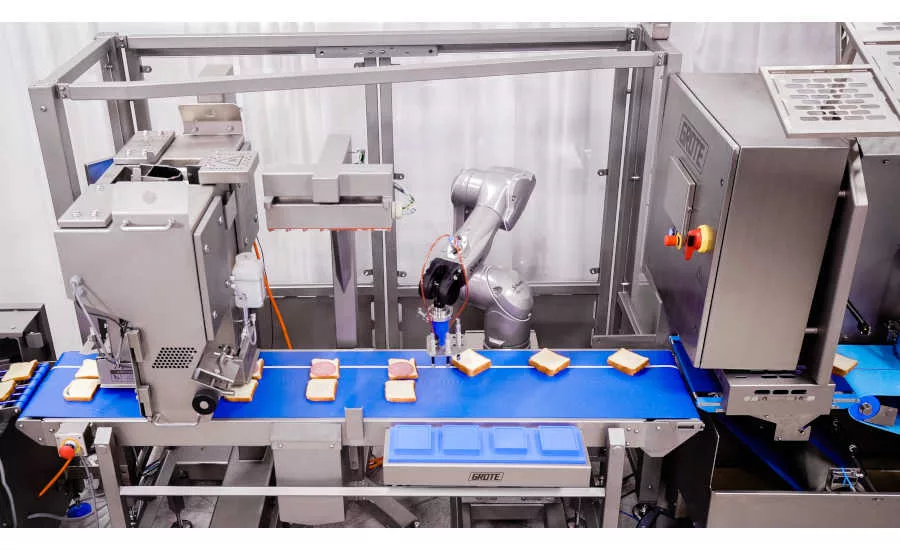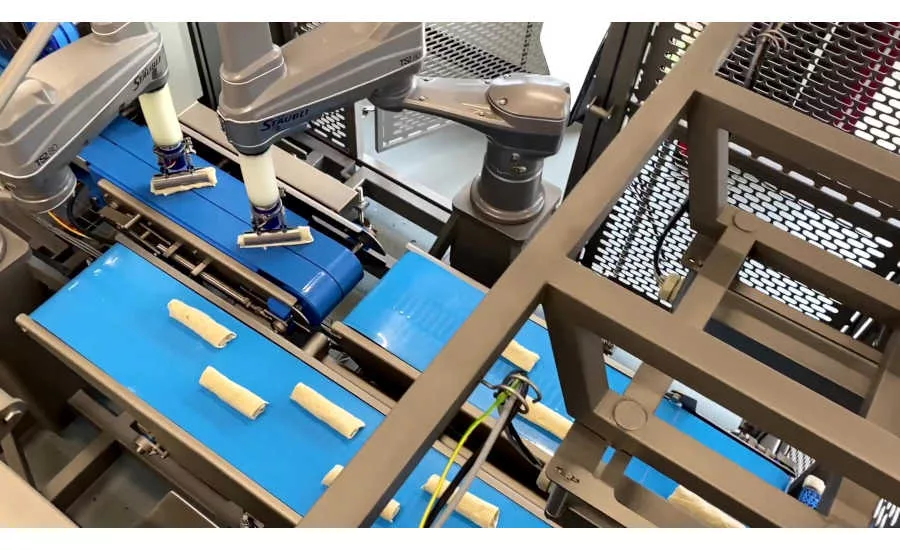Automation
The food processing industry needs automation to succeed


A long list of concerns continues to keep businesses in the food processing industry on their toes. Inflation. Supply chain issues. Hiring challenges. The pandemic. However, a connective thread runs through these four: automation.
Let's take a closer look.
The Pandemic Brought Automation Front and Center
Over the past couple of years, COVID has created an unprecedented situation for food processing industry employers. When an outbreak of this highly contagious virus occurs in a processing facility, it can take out an entire department. These outbreaks cause them to struggle to find enough workers to keep productivity up.
But even pre-COVID, there were jobs in the industry that were difficult to fill. For example, some roles require working in an environment kept cold enough to preserve the products being handled. In addition, the repetitive nature of some of the work can be a deterrent.
However, when productivity drops, no matter the reason, supply chain interruptions can occur. When supply is down and demand is up, inflation can strike.
We can see that all four of these factors are in some ways related. COVID exacerbated worker shortages. Productivity was impacted, affecting the supply chain, which in turn helped drive up prices.
So, what's the answer? What might help address these issues? Adopting automation is one solution.
Why Has Automation Lagged In Some Parts of the Food Processing Industry?
While there's been acceptance of fixed automation equipment in the food processing industry for decades, discussion around the adoption of flexible automation, such as robotic solutions, has lagged.
In particular, some smaller processors have continued to lean on manual labor versus robotics. This is due in part to the fact that food products aren’t uniform. If they’re to work in the food processing industry, equipment and robotics need to be adaptable for each item handled. The packaging portion of the industry has been able to adopt flexible automation more rapidly, as boxes are more uniform.
Meanwhile, you could see the increase in automation on either end of the spectrum. Look at farming technology, for example. Automation satellites enable farmers to manage up to 50 times the acreage with fewer laborers. Then, you have delivery services on the other end of the process. Those services continue to innovate as rapidly as possible.
The hesitation by processors was due in part to the notion that increasing flexible automation might displace human workers – but as we can see, there aren't enough of those to fill the open positions that currently exist.
Another argument has been that it may drive food prices up – but of course, that's already happening due to supply chain and inflation issues.
Now, with the onslaught of this combination of factors impacting their ability to keep up with demand, most food processors are taking a closer look at flexible automation solutions, such as the implementation of food contact robotics. As technology catches up, the opportunity to adopt flexible automation is increasing.
Why The Time Is Right for Increasing Flexible Automation in the Food Processing Industry
Let's examine why the adoption of flexible automation would be a positive for the food processing industry:
1) People are still required to run the equipment: Skilled labor won't be displaced by automation, as humans are still needed to ensure customized equipment runs properly. Processors can't simply add a robot and leave it at that. As long as we have to ensure the quality of the products we process, human workers will always be needed.
2) Older workers are leaving the workforce: Many seasoned workers are retiring, leaving no one to train and mentor younger workers. Some companies are opting to grow their own labor, meaning they are training from within to ensure they have workers ready to replace those leaving. There are programs like FITT (Food Industry Technician Training) launching to help.
3) Service calls are increasingly virtual: With the pandemic came the rise of virtual service in the industry. As service technicians can't physically visit the plants, most service calls are conducted virtually. However, there still needs to be a human doing the hands-on labor to address what needs to be done to repair or troubleshoot the equipment. As automation increases, more machines will need to be serviced.
4) Some work is better off being automated: Some jobs – like assembling sandwiches in a 38-degree environment – would be handled better by automation. There aren't a lot of workers who want those jobs. Turnover can be very high. Automation can help fill those gaps. New developments in product handling, such as end-of-arm tooling, are coming into play. Meanwhile, the people who currently hold those roles can stay employed and be offered the opportunity to take on more skilled positions.
5) Scale it – and the price will come down: Automation helps food processors scale their businesses. If you can produce more faster, you can supply and sell more, making more profit. The item's price may not need to rise for you to make more money.
6) Hiring is a challenge: Everywhere, in seemingly every industry, companies are facing hiring challenges. Grote Company is no different. We can't find enough skilled workers to fill open roles. This creates longer lead times. We know our customers are also experiencing similar backlogs. Flexible automation can help fill the positions that companies are struggling to fill.
7) Technology is more accessible: As the price of technology continues to decline, it becomes more accessible to more food processors. Not only are the solutions more cost-effective, but they’re also better than ever before (e.g., vision system accuracy, end of arm tooling (EOAT) options, robots, and so on). For example, 3D vision capabilities improve robot accuracy and performance in inconsistent size/shape applications. This technology can enhance productivity and product traceability while improving quality outcomes.
Finding a Balance Between Automation and Humans
One of our most significant challenges as food equipment suppliers is how do we as an industry keep up to best serve our customers amidst ongoing change? How can we factor in automation while keeping the human touch?
For example, the restaurant industry is evolving as the wants and needs of customers evolve. More people are eating at home, meaning fewer are eating in restaurants. This also equates to them buying more groceries to cook at home. As new habits are adopted, the industry must shift to meet demand.
It's all about finding the balance between automation solutions and humans. For example, at McDonald's, you may expect your Big Mac to taste the same every time – but what if you experience a problem as you try to pay for your food at the check-out? Isn't that when you might find it helpful to interact with a person?
How do we scale up to feed the world while balancing these challenges? As the food industry and processing continue to evolve, we should factor in automation. But humans will always play a role.
It's all about balance. Ultimately it's about how producers satisfy their customers. Yes, there is a place for automation – but humans must also play a role in solving the challenges the food processing industry faces.
Looking for a reprint of this article?
From high-res PDFs to custom plaques, order your copy today!






